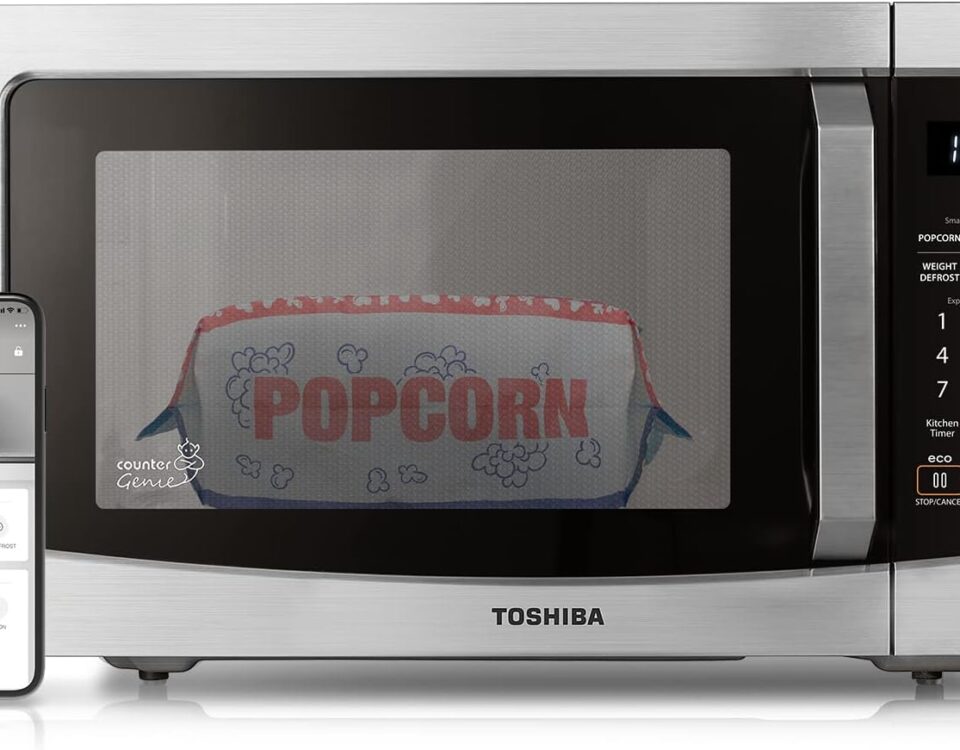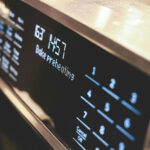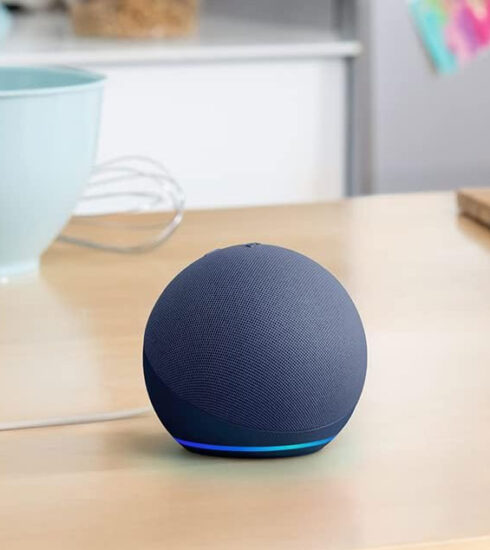Is a Smart Microwave Actually Useful or Just Another Gimmick?
Key Takeaways
| Question | Quick Answer |
| What does a smart microwave do? | It connects to Wi-Fi, syncs with voice assistants, and automates cooking. |
| Can I control it from my phone? | Yes, many models offer full remote control via apps. |
| Does it improve cooking results? | Yes, with built-in sensors and precise presets. |
| Is it really better than a regular microwave? | In convenience and control—yes. In raw power—depends on the model. |
| Are they worth it for homeowners? | If you cook often or want easier meal prep, probably. |
| Will it integrate with my smart home? | Most do, especially with Alexa and Google Assistant setups. |
| Is it complicated to use? | Actually, they’re easier than some old models. |
| Can it help with dietary needs or restrictions? | Some even check barcodes against allergies or dietary data. |
This post contains affiliate links. If you purchase through these links, I may earn a small commission at no additional cost to you. Your support helps keep this site running—thank you!
1. What Actually Is a Smart Microwave?
You’re probably wondering—what does a smart microwave do that my regular one doesn’t? Fair. Microwaves have been around forever, so how much “smarter” could they possibly get?
Here’s what’s going on:
A smart microwave is still a microwave. It heats food. But it’s got built-in tech like Wi-Fi, voice control, sensors, and app connectivity that lets it do stuff like:
- adjust cooking times automatically
- respond to voice commands
- send notifications to your phone
- scan barcodes for cook settings
- integrate with your smart home setup
Basically, it’s got a brain. Not a huge one, but smarter than the usual box with a spinning plate and 12 buttons no one ever uses right.
So why should anyone care? Because all those little things that slow you down while cooking—like guessing power levels, overcooking leftovers, or fiddling with confusing buttons—go away.
You don’t need to be a techie to use one. But it helps if you’ve got Wi-Fi and a phone, which, let’s be honest, you probably do.
Also, if your microwave is older than your teenager, this tech jump might actually make life easier.
2. Remote Control, Wi-Fi, and App Features
Here’s the part that throws people a bit: controlling a microwave from your phone. Why would you want to do that?
Turns out, it’s one of the features that actually makes sense once you’ve used it.
Here’s how it works:
- You download the app that goes with your smart microwave
- Connect it to your home Wi-Fi
- From there, you can:
- Start or stop it remotely
- Set or change power levels and cook times
- Get alerts when your food’s ready
- Adjust settings mid-cook if needed
It’s not about laziness. It’s about convenience when your hands are full or you’re wrangling kids or working from home and you just need that thing reheated now.
Things you can do with remote control:
- Start defrosting dinner from your upstairs office
- Preheat the microwave before coming back from grocery shopping
- Stop it instantly if you forgot to remove that spoon
The idea isn’t to make you dependent. It’s to give you another layer of control—without making you walk back and forth five times just to reheat soup.
And no, it won’t work if your Wi-Fi’s down. So if your internet drops often, that’s a valid thing to think about.
3. Voice Assistants: Hands-Free, Actually Helpful
You might already be used to saying “Hey Alexa, play some music” or “Hey Google, turn off the lights.” Now imagine this:
“Alexa, reheat my coffee.”
That’s it. No buttons. No squinting at a greasy keypad.
Voice control with smart microwaves isn’t just a fancy gimmick. It’s actually really useful in a few cases:
- If your hands are covered in dough
- If you’ve got mobility or vision issues
- If you’re multitasking in a busy kitchen
- If you literally just don’t feel like walking over
Most common commands:
- Start or stop cooking
- Add 30 seconds
- Reheat or defrost
- Ask for remaining cook time
This hands-free setup pairs well with Alexa or Google Assistant. You link the microwave via the app, and from there it becomes part of your voice-activated home setup.
Older users or people with disabilities can benefit a lot here too. Not having to navigate tiny buttons or see small screens just to warm up dinner? Big win.
There’s not much of a learning curve here either. If you’ve used voice assistants before, this is a plug-and-play deal.
It’s tech doing its job quietly—and actually making something easier.
4. Sensor-Based Cooking: Is It Actually Smarter Than You?
Okay, so this part? This is where the “smart” label actually earns its keep.
Sensor-based cooking doesn’t sound like much. It’s not flashy. You don’t get to brag about it at parties.
But it’s ridiculously useful.
So what is it?
Smart microwaves have built-in sensors. Moisture sensors, humidity readers, temperature tracking—all that.
When you put food in and hit a button (or use your voice, or your phone), those sensors do the work of figuring out:
- How hot the food already is
- How much steam it’s giving off
- How long it actually needs to cook
The microwave then adjusts the power level and time automatically.
So instead of overcooking your lasagna leftovers into some kind of cheese brick or turning your frozen dinner into lava on the edges and still-cold in the middle, it just… works.
Let’s break this down:
| Problem | What the Sensor Does | Result |
| Cold food in center, hot on edges | Detects temperature difference | Adjusts power for even cooking |
| Overheating liquids | Detects steam buildup | Lowers power to prevent boiling over |
| Burnt popcorn | Stops heating early if it detects it’s done | Saves your nose (and your microwave) |
And here’s the thing: it doesn’t always get it perfect. But it’s better than guessing.
Way better than stabbing buttons and hoping for the best.
It’s especially useful if:
- You reheat leftovers a lot
- You hate cooking guesswork
- You microwave meals with different textures (rice + chicken + sauce = nightmare in a regular microwave)
Once you’ve had sensor cooking, it’s hard to go back. You start realizing how much time you’ve wasted fixing half-cooked food or scraping burnt messes off your plate.
5. Scan-to-Cook: Yeah, It Reads Your Food for You
This one sounds kinda futuristic at first, but it’s pretty straightforward.
Some smart microwaves can scan a barcode from your frozen meal and then auto-load the correct cook settings.
No instructions, no searching for cook time, no guesswork.
Here’s how it works:
- You open the companion app (usually from GE, Whirlpool, etc.)
- You scan the barcode on the packaging
- The microwave gets the info from a database
- It auto-sets time, power, and sometimes even pauses or stages the cook
Brands that offer this:
- GE (really solid implementation)
- Sharp (more limited library)
- Whirlpool (integrates with their kitchen ecosystem)
The only catch?
Not every frozen food works yet. It depends on what’s in the microwave’s database. Bigger brands like GE have thousands of items logged, though.
If you eat a lot of:
- Frozen burritos
- TV dinners
- Breakfast sandwiches
- Packaged rice bowls
Then this feature might save you a lot of time and frustration.
You don’t have to memorize every food’s cook time. Or trust that “cook on high for 3:30” actually means 3:30 for your microwave.
The microwave knows—or at least knows better than most of us half the time.
6. Smart Home Integration: Is It Really That Connected?
Alright. This is where things can feel like overkill, but let’s dive in—
Smart microwaves don’t have to be isolated gadgets. They can be part of a system.
Think about this setup:
- Your smart fridge tells you you’re low on frozen meals
- You order more with a few taps
- Your microwave knows how to cook them because you’ve scanned the barcodes before
- Your smart lights dim slightly when it starts cooking
- You get a ping on your watch when your food’s done
- All without standing up
Sounds extra? Maybe.
But it’s not about flexing tech. It’s about making kitchen life less chaotic, more fluid.
These microwaves play nice with:
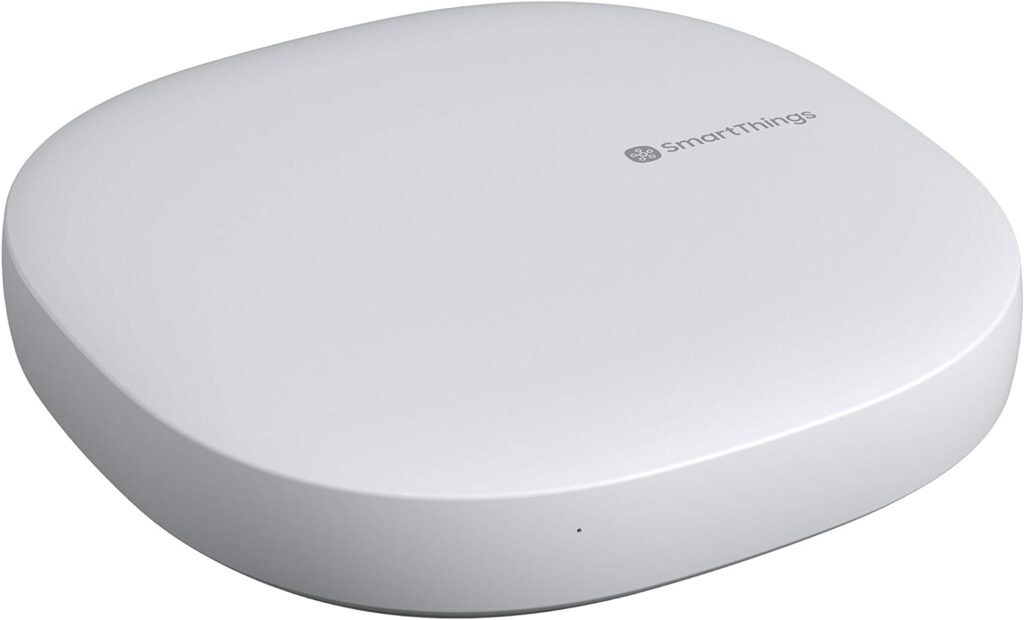
- Alexa / Echo ecosystems
- Google Home
- SmartThings
- IFTTT (If This Then That) for custom automations
So if you’ve already got a smart speaker, smart lights, or smart plugs, a smart microwave fits right in.
You can trigger routines like:
- “Good morning” that starts coffee, opens the blinds, and heats up oatmeal
- “Movie night” that dims lights and starts popcorn
- “Wrap-up” that turns off appliances when it’s time for bed
You don’t need this, but if you’re already deep into smart home territory, this completes the circle.
Also great for parents who want to set limits or notifications for how often the kids are nuking snacks.
7. Accessibility, Real-Time Updates, and Why Smart Microwaves Are Easier for Everyone
Here’s something people forget when they think about smart gadgets: not everyone can easily push buttons or read a tiny LCD screen.
Smart microwaves solve a bunch of that without shouting about it. It’s not just for tech nerds or people who want a “Jetsons” kitchen. It’s for people who need simplicity.
So who actually benefits?
- Older adults who don’t want to deal with confusing buttons
- People with vision loss who need audio or tactile feedback
- Anyone with mobility issues who can’t get up every time the timer dings
- Busy parents who need to know when the mac & cheese is ready without checking 5 times
These microwaves talk to you. Or send a push notification. Or beep on your phone. They remove steps, reduce guesswork, and let you focus on what you’re actually doing—like feeding your kids, or sitting down for once.
Let’s break it down:
| Feature | Who It Helps | Why It Matters |
| Voice control | Visually impaired, mobility-limited | No buttons, no screen needed |
| Smartphone alerts | Parents, multitaskers | Know when food’s done from any room |
| Simplified interfaces | Elderly users | Less confusion, fewer errors |
| Scan-to-cook | Kids, anyone who hates reading fine print | Removes guesswork from cooking |
| Dietary alerts (some models) | People with allergies or dietary needs | Prevents accidental meals that could cause harm |
Some models even let you add reminders or limit timers, useful if you’ve got someone in the house prone to forgetting or overheating meals.
And look—maybe you don’t need any of that. But someone else in your household might.
Or maybe one day you’ll break your wrist, or your eyes won’t be what they used to be, and suddenly the ability to reheat dinner without fiddling with a bunch of buttons sounds pretty good.
It’s not just about making things fancier. It’s about making them easier.
8. Are Smart Microwaves Worth the Money?
So… let’s talk price. Because yeah, they’re usually more expensive than regular microwaves. Not by thousands or anything wild, but enough to make people stop and ask, “Do I really need this?”
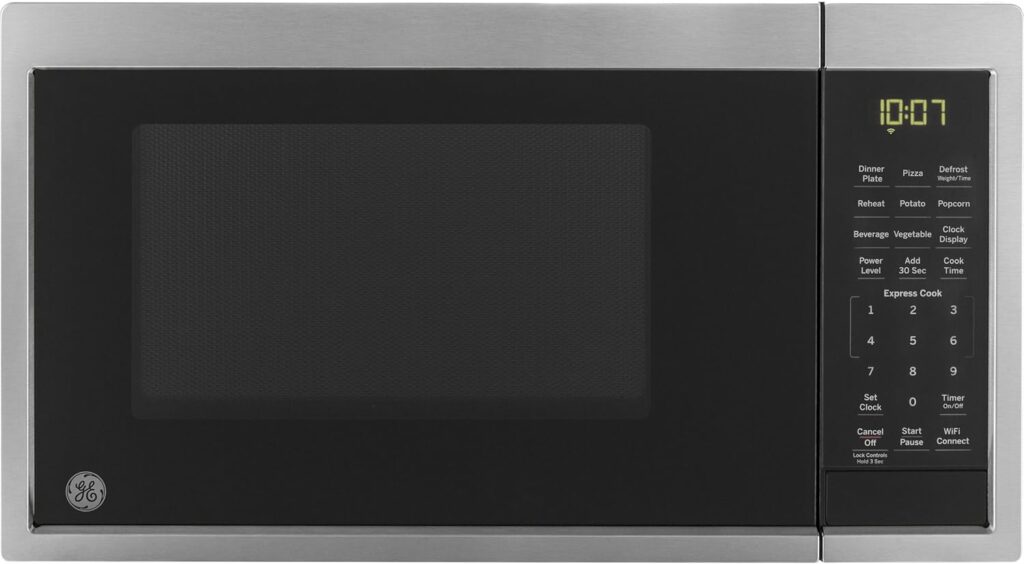
Quick answer: Maybe not. But also, maybe yes.
Let’s compare:
| Feature | Basic Microwave | Smart Microwave |
| Manual controls | ✓ | ✓ |
| Preset cook buttons | ✓ | ✓ |
| Wi-Fi control | ✗ | ✓ |
| Voice activation | ✗ | ✓ |
| Sensor-based cooking | Some | ✓ (and better) |
| Smart home integration | ✗ | ✓ |
| Barcode scan-to-cook | ✗ | ✓ |
| App connectivity | ✗ | ✓ |
| Accessibility features | Limited | Stronger support |
So when is it worth it?
- You’ve already got smart home devices and want to expand
- You reheat stuff a lot and are tired of bad results
- Someone in your home has accessibility needs
- You’re constantly busy and want fewer kitchen tasks
- You cook a lot of frozen or packaged meals
And when might it not be?
- You never use your microwave much
- You don’t have Wi-Fi at home
- You don’t want to mess with apps or voice stuff
- You like to do everything manually and don’t mind guesswork
Most smart microwaves range from $130 to $300, depending on brand and features. If your current microwave is already on its last legs, it’s probably a good time to upgrade.
Also worth noting: you can often find these on sale during major shopping events, and some manufacturers bundle them into smart kitchen appliance packages.
Frequently Asked Questions About Smart Microwaves
Let’s be real—this tech still raises a few eyebrows. People hear “smart microwave” and think either silly gimmick or overcomplicated nonsense. But if you’ve read this far, you probably get that there’s more to it. Still, here are the questions people ask the most—let’s answer them quick and straight.

Can I use a smart microwave without Wi-Fi?
Yes, you can. It’ll still heat your food like a regular microwave. But you won’t get voice control, app features, or scan-to-cook without an internet connection.
Is it secure? Can someone hack it?
Anything connected to the internet can technically be hacked, but smart microwaves don’t store personal info or credit card data. Still, use strong passwords on your Wi-Fi and app logins, like you would for any device.
Do I need a smart speaker like Alexa or Google Home to use voice control?
Most of the time, yes. The microwave doesn’t usually have a built-in mic—it connects through your smart speaker. If you don’t have one, you can still use the app for remote control.
Do smart microwaves cook faster?
Not really faster—but better. The sensor tech and automation give you more consistent results. You’ll probably save time by avoiding re-cooks or undercooked food.
What happens when my internet goes down?
The microwave still works like a standard one. You just lose the smart features until your connection is back. It’s not totally dependent on Wi-Fi.
Is the barcode scanning feature useful for most foods?
Depends on the brand. GE and Whirlpool have large databases, so frozen meals from major grocery stores usually work well. Niche or local brands might not be supported yet.
Can it really help with dietary restrictions?
Some models (especially GE and Whirlpool) can flag certain foods if you enter allergy or diet info in the app. It’s not foolproof, but it’s a nice safety feature for households with specific needs.
Will it work with my old phone or older smart home setup?
Most apps support Android and iOS, even on older models. But if your phone’s ancient or your smart system is from 2014, you might hit a wall. Always check the compatibility on the box or product page first.
Does it make a difference day to day?
For most people—yeah. If you use your microwave daily, it smooths out the experience. It’s not life-changing, but it adds convenience you’ll actually feel.
Final Thoughts: What Does a Smart Microwave Do?
A smart microwave isn’t just a talking box with Wi-Fi. It fixes everyday annoyances that come with basic cooking and reheating. It answers the question—what does a smart microwave do—with features that quietly help behind the scenes:
- Remote control when your hands are full
- Voice activation when you’re juggling 12 things
- Sensor cooking that takes the guesswork out
- Barcode scanning that makes frozen food way easier
- Alerts so you stop forgetting your lunch in there
It’s not magic. It’s not a must-have for every single person. But if you’re into tech, or you just like your appliances to make your life a bit easier instead of harder, it’s a solid buy.
Microwaves haven’t changed much in decades. This is the first time in a long time that they’ve gotten actually useful upgrades. And when something as boring as reheating soup gets easier? That’s a win.

